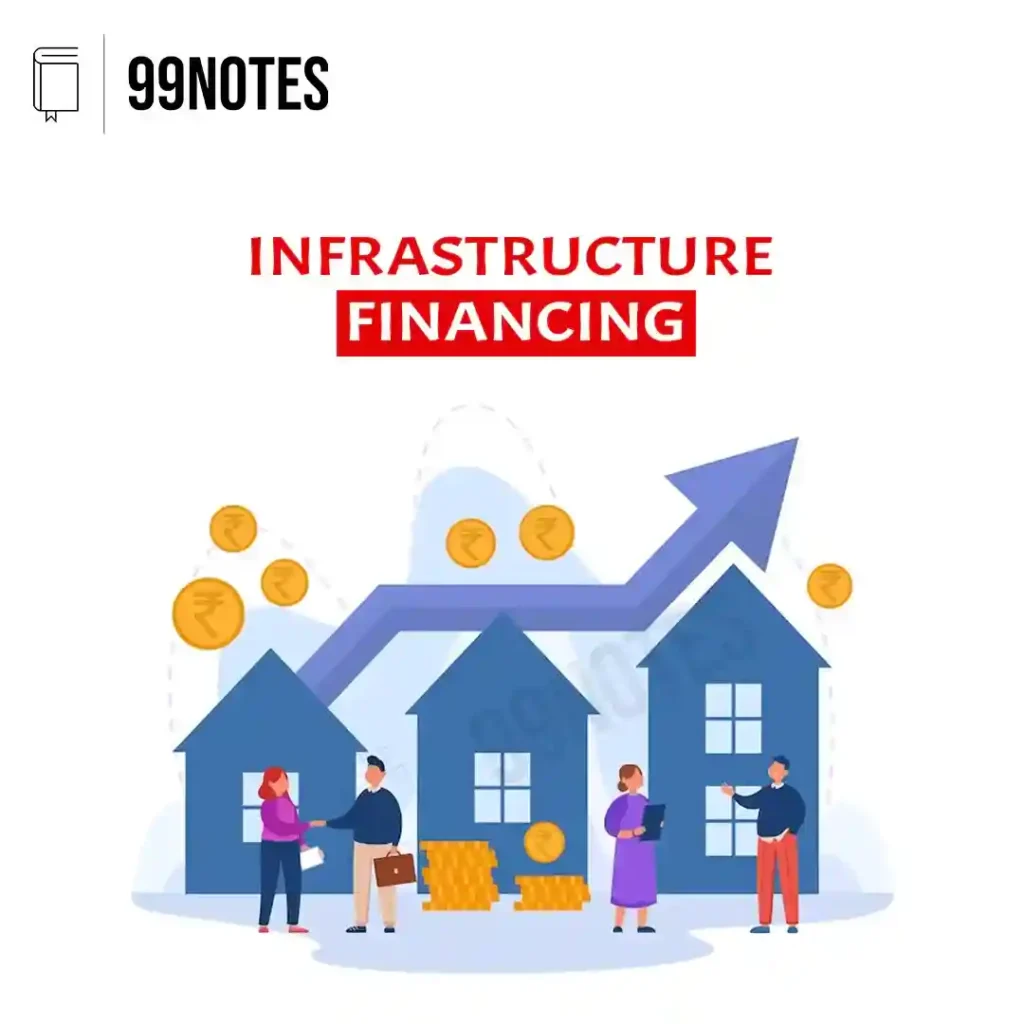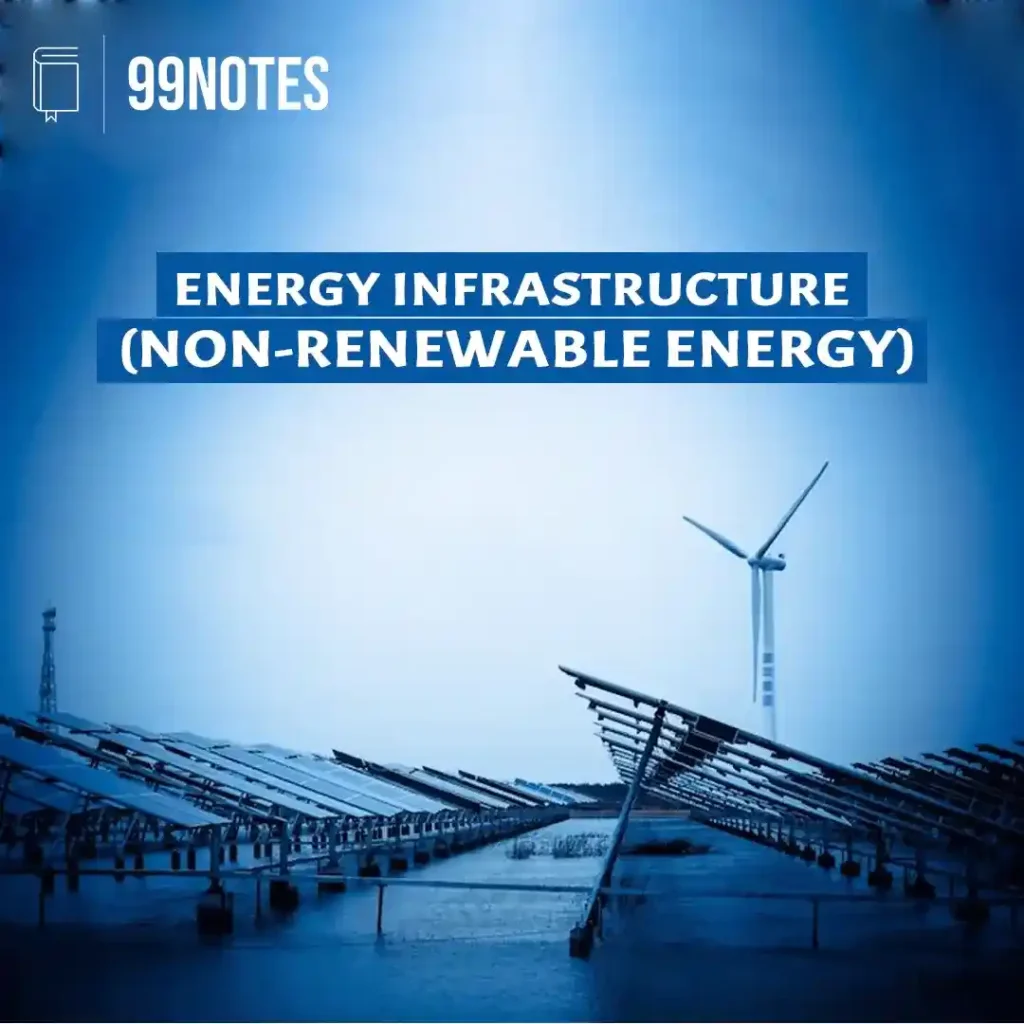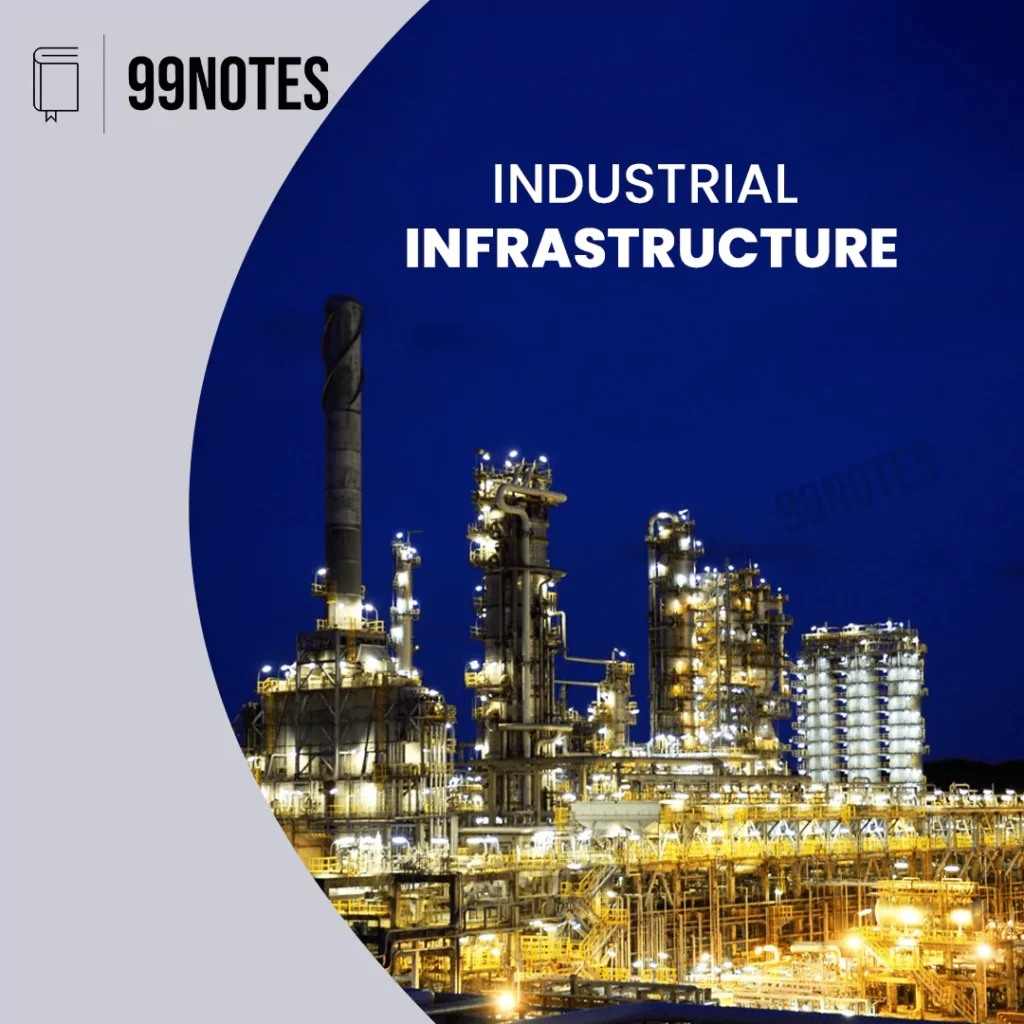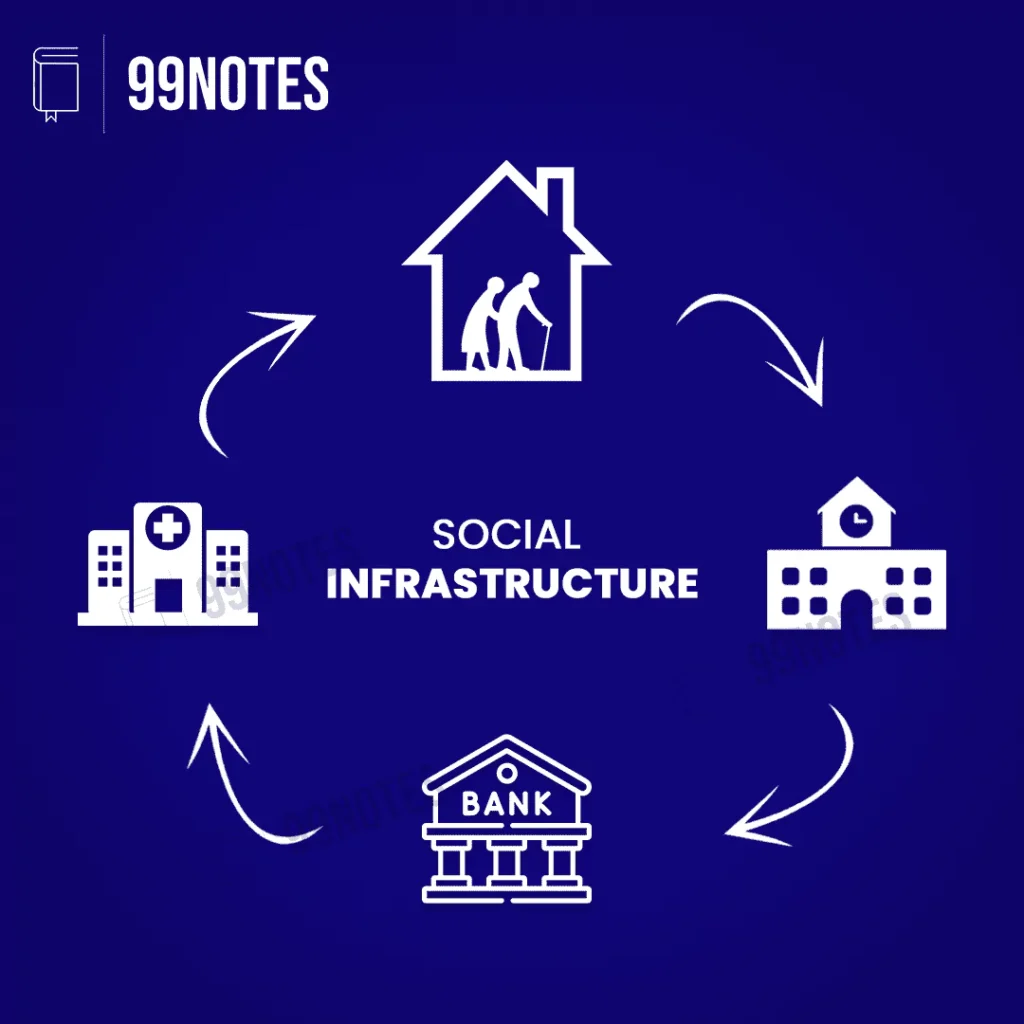
Infrastructure Free UPSC Notes Download

1. Infrastructure
Infrastructure is the set of physical and organizational structures (e.g. roads, water supplies, hospitals) needed for the operation of an enterprise or the society as a whole.

2. Infrastructure Financing
Infrastructure Financing refers to the set of mechanisms devised to Fund Infrastructure projects. Financing is the most critical aspect of infrastructure creation.

3. Road & Highways
Roadways are the most important mode of transport known to humans. Roads carry 64.5% of total goods and 90% of the passenger traffic in India. Out of all the roads in India, National highways hold around 2% of the total road network and carry 40% of total traffic.

4. Railways
‘Indian Railways’ is the country’s most significant public sector undertaking, comprising vast network stations and route length with a fleet of locomotives, passenger vehicles, etc. It operates the world’s fourth-longest rail network.

5. Civil Aviation
Civil aviation infrastructure is one of the most complex infrastructure systems. It majorly comprises aircraft manufacturing, air traffic control, and airport. But it also includes cargo-handling facilities, telecommunications, navigation and surveillance facilities, tourism, repair and overhaul resources, avionics manufacturing, repair and design capabilities, and flight training facilities.

6. Waterways Transport
Reading about the legislature is an important topic for the UPSC Civil Services Exam (CSE) because the legislature is one of the three organs of the government of India, along with the executive and the judiciary. The legislature is responsible for making laws for the country and represents the will of the people.

7. Logistics
India is a land of rivers surrounded on three sides by ocean. It has around 7500 kilometres of coastline and 14,500 km of potentially navigable waterways. Moreover, it is strategically located on key international trade routes. .

8. Energy Infrastructure (Non-Renewable Energy)
Non-renewable energy is derived from natural sources that cannot be regenerated and readily replaced by natural means quickly to keep up with consumption.

9. Renewable Energy
Renewable Energy sources are those sources of energy which are naturally replenished faster than the rate of their consumption.India’s massively growing energy requirements makes it pertinent for the country to look for renewable energy.

10. Digital Infrastructure
In modern economies, digital infrastructure has emerged as an equally or arguably more significant necessity than traditional infrastructure necessities such as power, water, and roads.

11. Housing
Housing industry is one of the pillars of economic foundations of our country and one of the fastest growing sectors. For our understanding in the context of policy making and the UPSC syllabus we shall classify the housing sector into three categories: 1. Affordable Housing 2. Rural Housing 3. Urban Housing

12. Industrial Infrastructure
Infrastructure is the set of provisions that serve a country, city, or other area. It encompasses the services and facilities necessary for its economy, households, and firms. In a similar sense, industrial infrastructure is the set of provisions that are needed to serve the needs of the manufacturing sector.

13. Social Infrastructure
Social Infrastructure refers to creating and maintaining facilities and structures that support the delivery of social services, which are essential for social development and, thereby, the overall development of a country. Social Infrastructure is the set of organisational arrangements and investments in society’s systems, relationships, and structures that enable us to generate a just, equitable, more resilient, and sustainable world. It comprises social, economic, environmental and cultural assets.
Infrastructure
Infrastructure refers to the basic physical and organizational structures and facilities needed for the operation of a society or enterprise. This can include things like roads, bridges, airports, ports, water and sewage systems, communication networks, and power plants.
The development of infrastructure is critical for the economic growth and development of a country. It enables the movement of goods and people, facilitates communication and connectivity, and provides the necessary utilities and services for businesses and households.
There are several factors that can impact the development of infrastructure in a country. One important factor is the availability of funding, which can come from a variety of sources such as government budgets, private investment, and international aid. Another factor is the level of technology and innovation, which can influence the efficiency and effectiveness of infrastructure projects. The regulatory environment, including policies and laws related to land use and environmental protection, can also play a role in the development of infrastructure.
In the context of the UPSC CSE exam, candidates may be expected to have a thorough understanding of the importance of infrastructure and its role in the economy. This could include topics such as the types of infrastructure, the various sources of funding for infrastructure projects, and the challenges and opportunities of infrastructure development.
There are several approaches to infrastructure development, each with its own set of advantages and disadvantages. One approach is government-led development, in which the government plans, finances, and executes infrastructure projects. This approach can provide a strong level of control and ensure that infrastructure meets the needs of the population, but it can also be slow and inefficient due to bureaucracy and the lack of private sector participation.
Another approach is private sector-led development, in which the private sector plays a leading role in the planning, financing, and execution of infrastructure projects. This approach can bring in expertise and efficiency, but it can also result in projects that prioritize profits over public needs.
Public-private partnerships (PPPs) are a hybrid approach that involves the collaboration of the public and private sectors in the development of infrastructure. PPPs can bring together the expertise and efficiency of the private sector with the oversight and public interest focus of the government. However, they can also be complex and may involve risks and challenges such as cost overruns and disputes over ownership and control.
Different types of infrastructure
- Effective economic infrastructure is crucial to the prosperity of a nation or organisation. This consists of the fundamental facilities and services that have a direct influence on the economic distribution process and aid in its success. Infrastructure includes elements such as energy, transportation, irrigation, and communication.
- Social Infrastructure: This type of infrastructure delivers the essential services required to increase productivity and achieve social objectives. The development of a country’s social infrastructure indirectly influences economic growth. The education sector of a country, for instance, does not instantly contribute to its economic growth. It indirectly contributes to the production of medical professionals and other skilled employees as a result of the high-quality education it delivers. Examples of social infrastructure include, among others, water supply, sanitation, health care, and housing.
Utility of Infrastructure
- It supplies the infrastructure necessary for the effective operation of the contemporary industrial economy.
- Modern agriculture is likewise dependent on swift and extensive transport networks. Now, it also depends on contemporary banking and insurance services.
- Infrastructure is crucial to the economic growth of a nation since it improves the quality of life of the people and increases the nation’s productive potential.
- The rate of morbidity, or propensity to become ill, has decreased as a result of better water supply and sanitation.
- As a result of improvements in transportation and communication infrastructure, health care facilities are now more quickly accessible.
The Condition of Indian Infrastructure:
- Historically, only the government was responsible for creating a country’s infrastructure, but today the private sector is also actively involved.
- Despite the fact that rural India is home to the bulk of our people, it still lacks infrastructure facilities. 2011 Census on the Condition of Infrastructure in India:
- Only 56% of rural families have access to electricity.
- 43% of homes still use kerosene.
- About 85 percent of families cook with biofuels.
- Only 31% of families are opposed to the availability of tap water.
- 69% depend on open sources like wells etc. for drinking water requirements.
- Access to improved sanitation was just 30% in rural regions. India invests barely 30 percent of its GDP in infrastructure, which is much less than China and Indonesia. For India to become the world’s third-largest economy, infrastructure development would require a larger push. Low-Wealth nations prioritise basic infrastructure such as irrigation, power, etc. Developed economies place greater emphasis on infrastructure connected to services. Thus, the economic development and infrastructural development of a state progress in tandem. Inadequate infrastructure is a significant barrier to economic progress.
Overall, the development of infrastructure is a critical aspect of economic growth and development. It requires careful planning and the appropriate balance of government and private sector participation.

